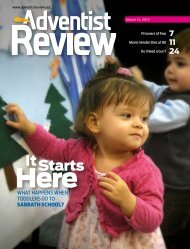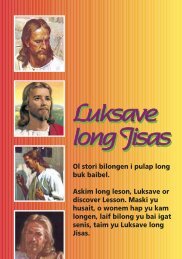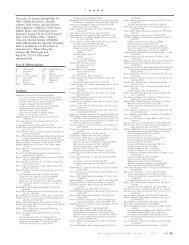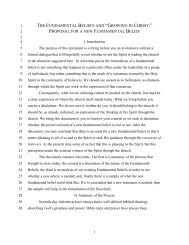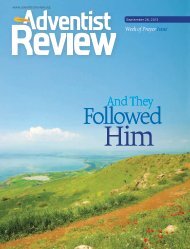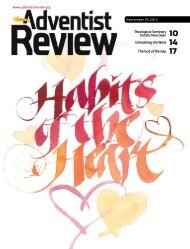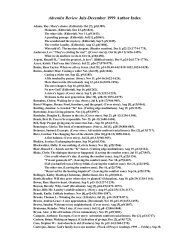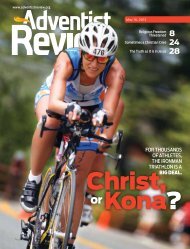Head
Download PDF - Adventist Review
Download PDF - Adventist Review
- No tags were found...
You also want an ePaper? Increase the reach of your titles
YUMPU automatically turns print PDFs into web optimized ePapers that Google loves.
BY GEORGE R. KNIGHT<br />
Dear Brethren Who Shall Assemble in General Conference: We are<br />
impressed that this gathering will be the most important meeting<br />
you have ever attended. This should be a period of earnestly<br />
seeking the Lord, and humbling your hearts before Him.” 1<br />
Such were the words of Ellen White on August 5, 1888, in a letter circulated<br />
to the delegates who would be attending the forthcoming session of the<br />
General Conference in October at Minneapolis, Minnesota. She not only highlighted<br />
the importance of the meetings but also hinted at tensions among<br />
the delegates and their need for serious and faithful Bible study.<br />
TENSION IN THE CAMP<br />
The tension didn’t take long to surface.<br />
“Elder Smith,” A. T. Jones blurted out<br />
early in the meetings, “has told you he<br />
does not know anything about this matter.<br />
I do, and I don’t want you to blame<br />
me for what he does not know.” Ellen<br />
White responded with “Not so sharp,<br />
brother Jones, not so sharp.” 2 Unfortunately,<br />
such harsh words and pompous<br />
attitudes provided part of the backdrop<br />
A Historical<br />
Account of a Very<br />
Historic Event<br />
1 888<br />
for the conflict that characterized the<br />
1888 General Conference session.<br />
Jones had no monopoly on the harshwords<br />
front. Ellen White repeatedly<br />
faulted General Conference president<br />
George I. Butler and Review and Herald<br />
editor Uriah Smith for what she labeled<br />
as the spirit of the Pharisees. Those<br />
leaders and their friends repeatedly<br />
expressed an attitude that “burdened”<br />
her, being “so unlike the spirit of Jesus.”<br />
?<br />
Its sarcastic, critical, self-righteous<br />
aspects, she noted, stirred up “human<br />
passions” and “bitterness of spirit,<br />
because some of their brethren had ventured<br />
to entertain some ideas contrary<br />
to the ideas that some others . . . had<br />
entertained, which were thought . . . to<br />
be inroads upon ancient doctrines.” 3<br />
THE “MEN” OF<br />
MINNEAPOLIS<br />
The battle lines of the 1888 session<br />
had arisen earlier in the decade over<br />
two theological points, and involved<br />
certain major participants. On one side<br />
were the two young editors of the California-based<br />
Signs of the Times—Ellet J.<br />
Waggoner and Alonzo T. Jones [see<br />
fuller biographies on pages 20, 21]. A<br />
trained physician who preferred the<br />
work of gospel ministry, Waggoner was<br />
probably the most gentle and sophisticated<br />
of the major male leaders in the<br />
struggle. His colleague, A. T. Jones, had<br />
been a sergeant in the United States<br />
Army and had all the attributes of his<br />
first profession. Jones never ran away<br />
from a battle, whether it be a frontier<br />
confrontation or one in the halls of Congress<br />
over church/state issues or with<br />
his fellow church leaders.<br />
Of somewhat the same mold were<br />
George I. Butler and Uriah Smith, presi-<br />
www.AdventistReview.org | October 10, 2013 | (897) 17





